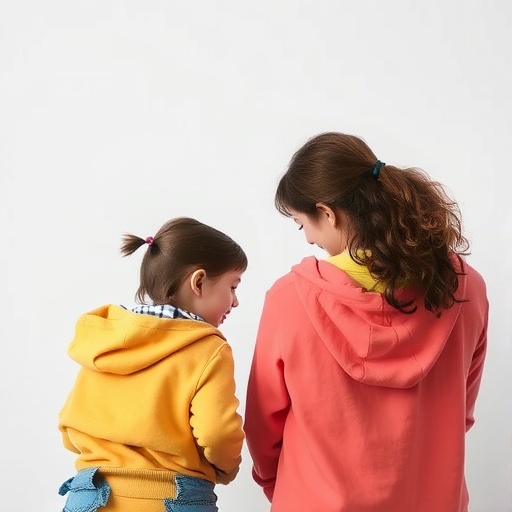Bubble dynamics plays a significant role in mechanics, chemistry, medicine, and biology. Understanding their interactions with the surrounding walls of the container is crucial for numerous applications, including cavitation erosion, underwater explosion, ultrasonic cleaning, shock wave lithotripsy (for treating kidney stones) and needle-free jet injection. As a result, researchers have explored bubble behavior both experimentally and theoretically (through numerical simulations. However, such studies have largely considered the container walls to be rigid and their findings are inadequate for instances involving oscillating walls – a significantly more complex behavior – such as erosion, cavitation, and microjet flow control.

Credit: Prof. Warn-Gyu Park from PNU, Korea.
Bubble dynamics plays a significant role in mechanics, chemistry, medicine, and biology. Understanding their interactions with the surrounding walls of the container is crucial for numerous applications, including cavitation erosion, underwater explosion, ultrasonic cleaning, shock wave lithotripsy (for treating kidney stones) and needle-free jet injection. As a result, researchers have explored bubble behavior both experimentally and theoretically (through numerical simulations. However, such studies have largely considered the container walls to be rigid and their findings are inadequate for instances involving oscillating walls – a significantly more complex behavior – such as erosion, cavitation, and microjet flow control.
Addressing this issue, a team of researchers from Vietnam and Korea led by Prof. Warn-Gyu Park from Pusan National University (PNU) in Korea, numerically investigated the collapse of a spherical bubble characterized by a Rayleigh collapse time, TR near a rigid wall oscillating with a large amplitude (greater than one percent of the bubble radius). Their work was made available online on 14 December 2022 and was published in Volume 35, Issue 1 of journal Physics of Fluids on 05 January 2023.
“The bubble collapse was simulated using a compressible two-phase, namely water and vapor, flow model and the volume of fluid interphase-sharpening technique. Further, we used a moving grid scheme and a sinusoidal function to represent the wall oscillations,” explains Mr. Quang-Thai Nguyen, a PhD student at PNU and the first author of the study. “We then verified the predictions of our model against experimental data on bubbles and their dynamics near fixed walls. Following this, the case of oscillating walls were considered.”
In their two-phase model, the researchers simulated the walls as initially moving either towards (in-phase) or away from (out-of-phase) the bubble. While the in-phase wall motion compressed the bubble surface leading to a high internal pressure, the opposite happened in the out-of-phase case. In both cases, however, the bubble collapsed faster and more violently than for the fixed wall scenario. Significant jet formation and higher pressure peaks were also observed. However, the collapse times were different in each case – 0.0 TR for in-phase and 1.0 TR for out-of-phase motion.
Additionally, the researchers determined the effect of the wall oscillation amplitude-to-bubble radius and wall oscillation time period-to-TR ratios on bubble behavior, namely its size, collapse time, and migration, and the wall shock impact, namely the flow speed and impact pressure. The simulation revealed multiple features, including a critical point for the in-phase scenario for an oscillation amplitude-to-bubble radius of 0.5.
While these results are interesting in themselves, they have applications beyond extending the knowledge of bubble-wall interactions. “They will contribute to the development of new technologies in industrial engineering, transferring laboratory-scale applications to commercial-scale operations. For instance, the high values of maximum jet flow speed and peak impact pressures observed in our study could help resolve existing microjet direction and cavitation erosion control problems,” speculates Prof. Park. “Furthermore, the advanced numerical method can be extended to analyze multiphase compressible flows in areas such as renewable energy, life science and biomedicine, and high-velocity projectiles,” he concludes.
***
Reference
DOI: https://doi.org/10.1063/5.0132049
Authors: Quang-Thai Nguyen1, 2, Van-Tu Nguyen1,*, Thanh-Hoang Phan1, Trong-Nguyen Duy1, Seong-Ho Park1 and Warn-Gyu Park1,*
Affiliations: 1School of Mechanical Engineering, Pusan National University; 2Institute of Mechanics, Vietnam Academy of Science and Technology
Lab website address: https://cfd.pusan.ac.kr/cfd/index.do
ORCID id: 0000-0001-9109-9509 (Quang-Thai Nguyen)
ORCID id: 0000-0003-4250-2634 (Prof. Warn-Gyu Park)
ORCID id: 0000-0002-2229-8683 (Res. Prof. Van-Tu Nguyen)
*Corresponding authors’ emails: [email protected]; [email protected];
About Pusan National University
Pusan National University, located in Busan, South Korea, was founded in 1946, and is now the no. 1 national university of South Korea in research and educational competency. The multi-campus university also has other smaller campuses in Yangsan, Miryang, and Ami. The university prides itself on the principles of truth, freedom, and service, and has approximately 30,000 students, 1200 professors, and 750 faculty members. The university is composed of 14 colleges (schools) and one independent division, with 103 departments in all.
Website: https://www.pusan.ac.kr/eng/Main.do
About the author
Quang-Thai Nguyen is currently a Ph.D. Candidate of Energy System Major under his supervisors, Prof. Warn-Gyu Park and Research Professor Van-Tu Nguyen at the Computational Fluid Dynamics Laboratory of the School of Mechanical Engineering at Pusan National University (PNU), Korea. He is a BK21 Scholarship fellow for the Ph.D. program at the institute. His group develops various high-fidelity numerical models for fluid dynamics, transfer of heat and mass in multiphase flow, and related applications. He is also a researcher at the Institute of Mechanics of VAST since 2015. He received his MS Degree from the University of Engineering and Technology of Vietnam National University, Hanoi in -2019
Journal
Physics of Fluids
DOI
10.1063/5.0132049
Method of Research
Computational simulation/modeling
Subject of Research
Not applicable
Article Title
Numerical study of dynamics of cavitation bubble collapse near oscillating walls
Article Publication Date
5-Jan-2023
COI Statement
The authors have no conflicts to disclose.




